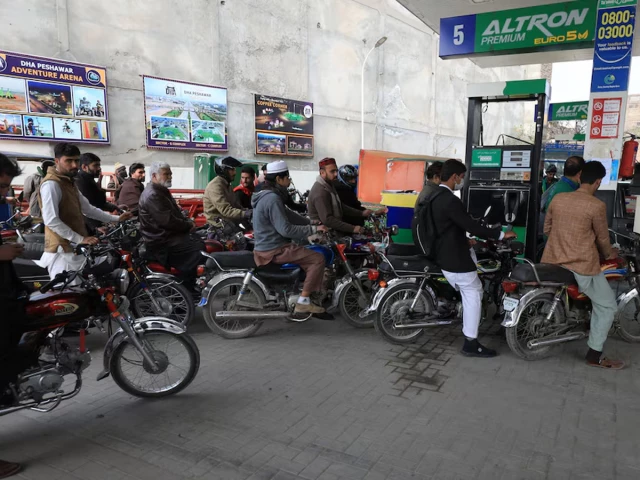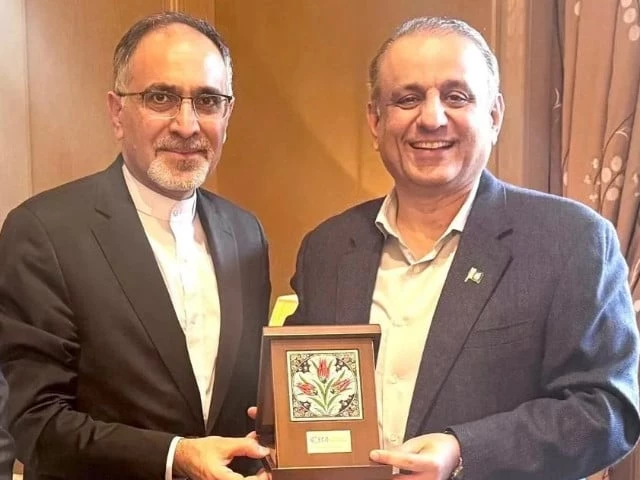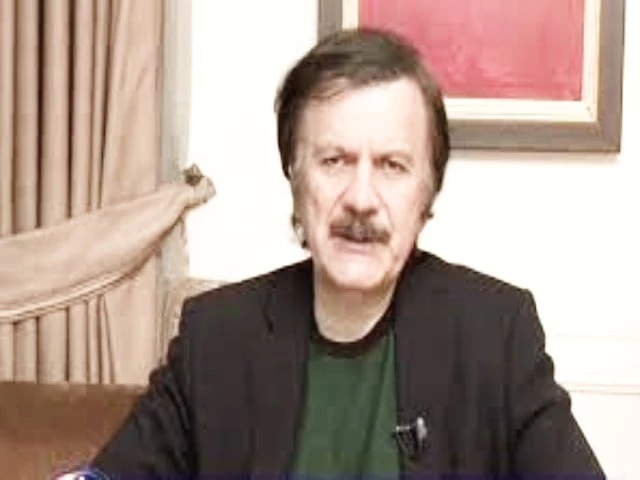Business
Is Pakistan ready to seize US export opportunity? | The Express Tribune

ISLAMABAD:
The United States is undergoing a major overhaul of its trade policies, triggering a broader reshaping of global supply chains. Steep tariff hikes on key exporters like China, India and Brazil are forcing US importers to rethink their sourcing strategies.
This disruption presents a rare and valuable opening for countries like Pakistan to step in and gain market share. With Chinese and Indian exports facing average tariffs of 50% or more, Pakistan’s comparatively low 19% tariff offers a clear competitive edge. The critical question is whether Pakistan is prepared to seize this moment.
American importers are already shifting supply chains away from high-tariff countries, creating new opportunities for agile exporters. Pakistan, with its recent economic reforms reducing input costs and facilitating capital goods imports, is uniquely positioned to capitalise on this trade realignment.
After years of stagnant exports, this market disruption presents a critical window to gain foothold in vacated market segments, particularly where Pakistan’s newly enhanced cost competitiveness can deliver immediate advantages.
Pakistan’s current strongest export position in the US lies in textiles and apparel, where it ships over $5 billion of goods annually. By comparison, China exports $40 billion — apparel about $24 billion and textiles $16 billion — and India $9 billion with a balanced 50-50 split between apparel and textiles.
Even a modest redirection of orders from these countries to Pakistan could generate significant gains. The textile sector, given its existing base and infrastructure, remains the most immediate area where Pakistan could scale up exports quickly.
In addition to textiles and clothing, several other sectors show promise. Pakistan’s leather exports to the US currently stand at $171 million, while its global leather exports total $710 million, highlighting that the country is competitive in this sector.
Similarly, the sports goods industry, known for its world-class football manufacturing, has exports nearing $400 million and is well-positioned to grow with improved branding and market access. The recent emergence of truck and bus radial tyres as an export item to the US is another bright spot. With exports surpassing $100 million last year and over 20% year-on-year growth, it reflects the kind of momentum that can be built with the right focus.
Pakistan’s mobile assembly sector represents one of its most glaring missed industrial opportunities. While India’s mobile exports to the US surged to $7.5 billion in FY 2024-25, fuelled by China tariff diversions, Pakistan’s $160 million in annual exports remain confined to low-end markets, despite sharing similar starting conditions.
The 2020 Mobile Device Manufacturing Policy attracted 26 assemblers through component duty exemptions and local market protection, driving import substitution (90% of domestic demand). However, this inward-focused model, which failed spectacularly in the auto sector, continues to stifle export potential. Component imports now consume $1.5-2 billion annually without generating meaningful foreign exchange as assemblers prioritise lucrative domestic sales over competitive global integration.
The need for change is particularly critical in the engineering goods sector where Indian exports to the US are about $18 billion, or 28% of their exports, as compared to Pakistan’s less than $0.5 billion, or about 7% of its exports. This sector must be freed from the outdated import substitution mindset still embedded within the relevant government institutions.
This is a missed opportunity not just economically but also strategically, as engineering-led exports can help Pakistan diversify its trade base and reduce over-reliance on traditional low value-added sectors. If this sector is freed from micromanagement of government agencies, it could become a key driver of export growth and industrial upgrading.
The global trade order is experiencing its most profound transformation in a generation, presenting Pakistan with a critical opportunity to reshape its economic future. Bold reforms in this year’s budget, particularly tariff rationalisation, are already yielding promising results: a record 17% monthly export surge and 42% growth in customs and other taxes on imports, marking the highest single-month gains in recent history.
While it’s premature to draw long-term conclusions from one month’s data, these early indicators align with economic modelling that predicted benefits from greater openness, validating the reform direction. Critics who focus narrowly on deficits overlook a fundamental truth of development economics: strategic short-term deficits have consistently served as necessary investments for emerging economies to achieve lasting prosperity, as demonstrated by the trajectories of China, Vietnam and other success stories.
The writer is a member of the steering committee on US tariffs. Previously he served as Pakistan’s ambassador to WTO and FAO’s representative to the United Nations
Business
Private sector data: Over 2 lakh private companies closed in 5 years; govt flags monitoring for suspicious cases – The Times of India

NEW DELHI: The government on Monday said that over the past five years, more than two lakh private companies have been closed in India.According to data provided by Minister of State for Corporate Affairs Harsh Malhotra in a written reply to the Lok Sabha, a total of 2,04,268 private companies were shut down between 2020-21 and 2024-25 due to amalgamation, conversion, dissolution or being struck off from official records under the Companies Act, 2013.Regarding the rehabilitation of employees from these closed companies, the minister said there is currently no proposal before the government, as reported by PTI. In the same period, 1,85,350 companies were officially removed from government records, including 8,648 entities struck off till July 16 this fiscal year. Companies can be removed from records if they are inactive for long periods or voluntarily after fulfilling regulatory requirements.On queries about shell companies and their potential use in money laundering, Malhotra highlighted that the term “shell company” is not defined under the Companies Act, 2013. However, he added that whenever suspicious instances are reported, they are shared with other government agencies such as the Enforcement Directorate and the Income Tax Department for monitoring.A major push to remove inactive companies took place in 2022-23, when 82,125 companies were struck off during a strike-off drive by the corporate affairs ministry.The minister also highlighted the government’s broader policy to simplify and rationalize the tax system. “It is the stated policy of the government to gradually phase out exemptions and deductions while rationalising tax rates to create a simple, transparent, and equitable tax regime,” he said. He added that several reforms have been undertaken to promote investment and ease of doing business, including substantial reductions in corporate tax rates for existing and new domestic companies.
Business
Pakistan’s Textile Exports Reach Historic High in FY2025-26 – SUCH TV

Pakistan’s textile exports surged to $6.4 billion during the first four months of the 2025-26 fiscal year, marking the highest trade volume for the sector in this period.
According to the Pakistan Bureau of Statistics (PBS), value-added textile sectors were key contributors to the growth.
Knitwear exports reached $1.9 billion, while ready-made garments contributed $1.4 billion.
Significant increases were observed across several commodities: cotton yarn exports rose 7.74% to $238.9 million, and raw cotton exports jumped 100%, reaching $2.6 million from zero exports the previous year.
Other notable gains included tents, canvas, and tarpaulins, up 32.34% to $53.48 million, while ready-made garments increased 5.11% to $1.43 billion.
Exports of made-up textile articles, excluding towels and bedwear, rose 4.17%, totaling $274.75 million.
The report also mentioned that the growth in textile exports is a result of improved global demand and stability in the value of the Pakistani rupee.
Business
Peel Hunt cheers ‘positive steps’ in Budget to boost London market and investing

UK investment bank Peel Hunt has given some support to under-pressure Chancellor Rachel Reeves over last week’s Budget as it said efforts to boost the London market and invest in UK companies were “positive steps”.
Peel Hunt welcomed moves announced in the Budget, such as the stamp duty exemption for shares bought in newly listed firms on the London market and changes to Isa investing.
It comes as Ms Reeves has been forced to defend herself against claims she misled voters by talking up the scale of the fiscal challenge in the run-up to last week’s Budget, in which she announced £26 billion worth of tax rises.
Peel Hunt said: “Following a prolonged period of pre-Budget speculation, businesses and investors now have greater clarity from which they can start to plan.
“The key measures were generally well received by markets, particularly the creation of additional headroom against the Chancellor’s fiscal rules.
“Initiatives such as a stamp duty holiday on initial public offerings (IPOs) and adjustments to the Isa framework are intended to support UK capital markets and encourage investment in British companies.
“These developments, alongside the Entrepreneurship in the UK paper published simultaneously, represent positive steps toward enhancing the UK’s attractiveness for growth businesses and long-term investors.”
Ms Reeves last week announced a three-year stamp duty holiday on shares bought in new UK flotations as part of a raft of measures to boost investment in UK shares.
She also unveiled a change to the individual savings account (Isa) limit that lowers the cash element to £12,000 with the remaining £8,000 now redirected into stocks and shares.
But the Chancellor also revealed an unexpected increase in dividend tax, rising by 2% for basic and higher rate taxpayers next year, which experts have warned “undermines the drive to increase investing in Britain”.
Peel Hunt said the London IPO market had begun to revive in the autumn, although listings activity remained low during its first half to the end of September.
Firms that have listed in London over recent months include The Beauty Tech Group, small business lender Shawbrook and tinned tuna firm Princes.
Peel Hunt added that deal activity had “continued at pace” throughout its first half, with 60 transactions announced across the market during that time and 10 active bids for FTSE 350 companies, as at the end of September.
Half-year results for Peel Hunt showed pre-tax profits jumped to £11.5 million in the six months to September 30, up from £1.2 million a year earlier, as revenues lifted 38.3%.
Peel Hunt said its workforce has been cut by nearly 10% since the end of March under an ongoing savings drive, with full-year underlying fixed costs down by around £5 million.
Steven Fine, chief executive of Peel Hunt, said: “The second half has started strongly, with the group continuing to play leading roles across both mergers and acquisitions and equity capital markets mandates.”
-

 Sports1 week ago
Sports1 week agoWATCH: Ronaldo scores spectacular bicycle kick
-

 Entertainment1 week ago
Entertainment1 week agoWelcome to Derry’ episode 5 delivers shocking twist
-

 Politics1 week ago
Politics1 week agoWashington and Kyiv Stress Any Peace Deal Must Fully Respect Ukraine’s Sovereignty
-

 Business1 week ago
Business1 week agoKey economic data and trends that will shape Rachel Reeves’ Budget
-

 Tech6 days ago
Tech6 days agoWake Up—the Best Black Friday Mattress Sales Are Here
-

 Politics1 week ago
Politics1 week ago53,000 Sikhs vote in Ottawa Khalistan Referendum amid Carney-Modi trade talks scrutiny
-

 Fashion1 week ago
Fashion1 week agoCanada’s Lululemon unveils team Canada kit for Milano Cortina 2026
-

 Tech23 hours ago
Tech23 hours agoGet Your Steps In From Your Home Office With This Walking Pad—On Sale This Week


1729471601-0/image-(8)1729471601-0-640x480.webp)








